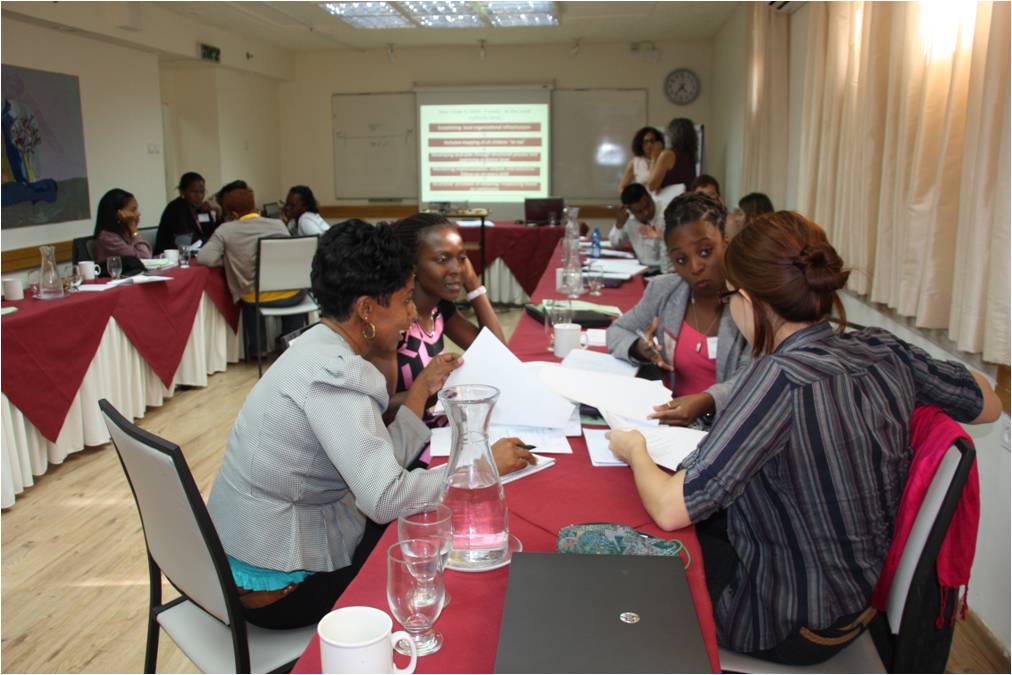
"Children are not the people of tomorrow, but people today. They are entitled to be taken seriously. They have a right to be treated by adults with tenderness and respect, as equals." Janusz Korczak
A range of interventions aimed at expanding access and improving quality have helped to reduce dropout. Accessibility initiatives have been created in terms of improving quality, there are initiatives to improve teacher training and support, provide relevant and modern learning materials and integrate technology and gender-sensitive practices.
Yet, school dropout remains a persistent concern. This goal presents a great challenge that must be met with creativity, resourcefulness and hard work.
One of the targeted populations within the stated goal is youth-at-risk. This label - given by various authorities (psychologists, educators, and sociologists) - refers to vulnerable adolescents from all socio-economic backgrounds for whom normal family life has been disrupted, and who lack sufficient parental or adult interaction.
For these young people, the educational system takes on a special significance. Therefore, it is especially crucial to create educational opportunities to widen access to education. These children must integrate into schools and training programs as quickly and as fully as possible, so they can have multiple opportunities for meaningful learning experiences.
However, “access” is complex and multifaceted. The professional educators who constantly mediate between students and the world around them must be supportive and caring when working with this special-needs group. Educators must create opportunities and impart skills, competencies, and attitudes that will enable these adolescents to be productive and resourceful members of society.
Every nation today is involved in the challenging process of providing quality education to meet the new demands of the 21st century. Educational systems have to develop innovative outreach programs for these school dropouts, focusing all efforts on creating positive conditions and individual skills that will foster resiliency and offset risk factors.
Given Israel's many national responsibilities – including the absorption of massive numbers of immigrants from various countries and cultures, while simultaneously dealing with emergencies – its instructional and educational personnel have an important and highly complex role.
Israel has achieved considerable progress in increasing the number of students between the ages of 12-18 who attend high school. However, despite Israel's Ministry of Education's policy for the prevention of student dropout and the development of special and varied curricula, some of these young people have not been successfully integrated into the existing system. In order to deal with this challenge and its ramifications, the Ministry has made strides in the field of youth advancement, via the development of the Youth and Society Administration. This section in the Ministry works toward developing and advancing the educational-remedial services for those students that have dropped out of formal educational frameworks.
The course designed by The Aharon Ofri MASHAV International Educational Training Center is aimed at Directors of Education departments in Education Ministries whose responsibilities involve the allocation of resources and development of educational policies, Supervisors of primary and secondary schools, Principals; Counselors, Educational Social Workers, Teacher Training institutions and NGO´s.
Based on the vast experience the Israeli education system has acquired over the years in working towards an educational environment contributive to sustainability and globalization, with a tailored approach that can be instrumental in keeping kids in school and ensuring that they are equipped for success in tertiary education and meaningful life.
Aims
To train participants to successfully:
*Create a relationship of mutual trust with youth in order to enable their reintegration into the educational system.
*Help individual youths develop and realize their potential so that they may help themselves and their society.
*Reduce alienation from the community and society.
*Plan educational services and interventions for youths ages 12-18 considered at-risk according to the following characteristics:
- Detached youths who do not study or work in a formal or informal
educational framework
- Working youth who do not have a supportive educational framework
- Youth-at-risk who commit open or clandestine crimes
- High-risk youth needing individual and ongoing support in areas including completing their education, job placement, and personal and social skills
*Raise multicultural awareness in those working toward the advancement of disadvantaged youth
*Provide tools and guidelines for curricular development
*Advance teaching methods for the specific subject matter (such as science and language), as well as interdisciplinary subject areas
*Train and advance educational staff and support them in sustaining their duties and promoting their programs
*Enable participants to choose the methods and tools suitable to the particular needs of their environment
*Provide a basis for future training activities according to the needs of the different countries and institutions
Main Subjects
*Latest concepts, methods, and tools for educational staff training
*Model of the Pluralistic Identity
*Models of Multicultural Education
*Programs designed to implement the compulsory education law for detached youth who are not integrated into formal educational frameworks, including special programs for youth in protective institutions and prisons
*Humanistic Mathematics as a Tool of Educational Insertion
*Science and Technology Projects as a Tool for Educational Insertion
*Education towards completion of certificates on various high school grade levels, within the framework of compensatory centers operated in cooperation with local authorities
*The development of social skills, practical skills, and leadership
*Special seminars on civic education
*The training of special education personnel to work with youth-at-risk
*Computerized information centers to provide services for youth, locally and nationally
*Complementary education for school-excluded youth: An Evaluation Study – "From Exclusion to Inclusion”
*Improving awareness in teachers of disadvantaged students
*Ways and means designed to assist latent school dropouts
*Correlation between cultural gaps and learning perseverance level
*The influence of achievement, motivation, and aspiration on learning processes
*Prevention of violent behavior among school students through the advancement of youth programs
*Education to prevent the use of drugs and alcohol
*Sexual education
- Date: